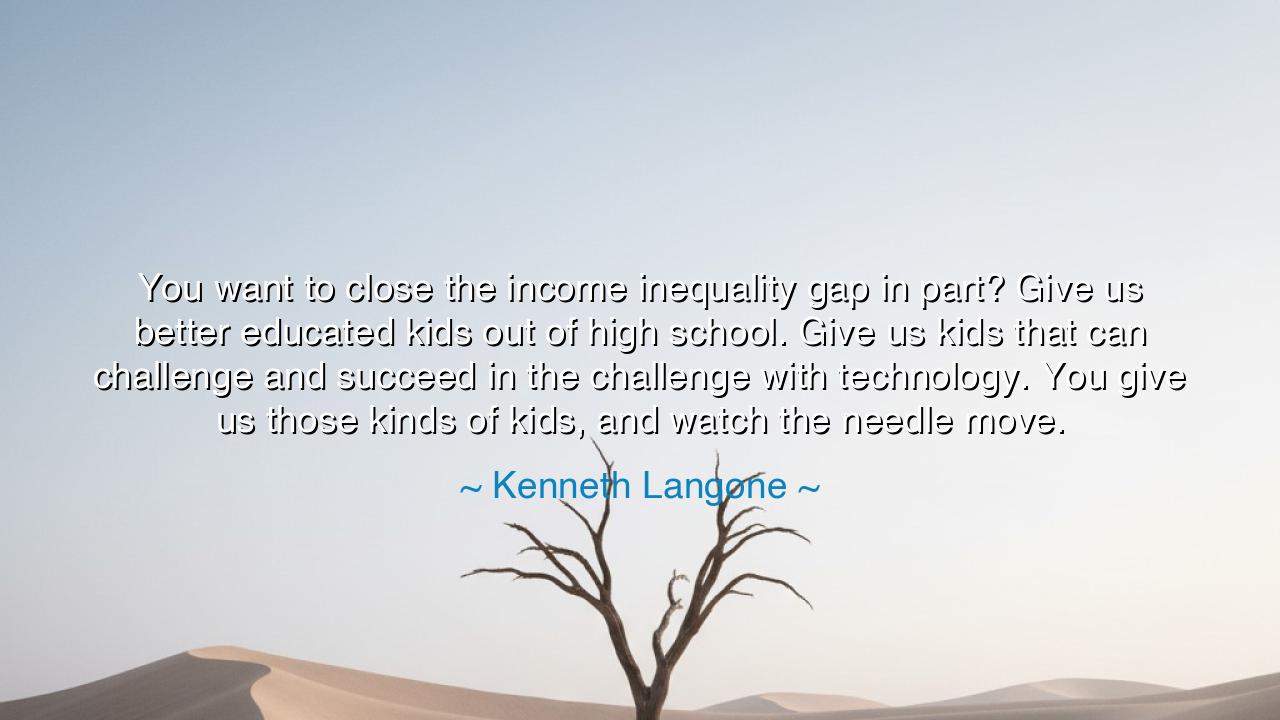
You want to close the income inequality gap in part? Give us
You want to close the income inequality gap in part? Give us better educated kids out of high school. Give us kids that can challenge and succeed in the challenge with technology. You give us those kinds of kids, and watch the needle move.






Hear the words of Kenneth Langone, a builder of empires, who declared with urgency: “You want to close the income inequality gap in part? Give us better educated kids out of high school. Give us kids that can challenge and succeed in the challenge with technology. You give us those kinds of kids, and watch the needle move.” These are not idle musings, but a call to arms for a generation. He reminds us that the foundation of prosperity is not charity alone, nor laws alone, but the equipping of the young with the strength to thrive in the age of machines and knowledge.
For income inequality has been the wound of nations since the dawn of civilization. In every empire, wealth has clustered like gold at the top, while the poor struggled beneath. Kings decreed, armies enforced, priests preached—but none could truly erase the gap. Yet Langone points to a weapon far greater than decree or force: education. Not mere recitation of facts, but the shaping of minds that can challenge, adapt, and master the tools of their time. He declares that the way forward is not to lament the gap, but to prepare the young so well that they leap across it.
Consider the rise of America itself, where free public education was once seen as a radical dream. In the 19th century, Horace Mann and others fought to make schooling universal, believing that knowledge was the great equalizer. And indeed, from those humble schools came inventors, entrepreneurs, and leaders who built industries and transformed a nation. The plow gave way to the machine, and the machine to the computer—but the constant truth was this: those who were best prepared in learning and technology found the path to prosperity.
Yet Langone warns that the world has changed. The challenge is no longer only to read and write, but to grapple with technology that shifts like quicksilver, demanding not only knowledge but creativity, adaptability, and resilience. The worker of tomorrow must not only use the machine but challenge it, improving it, mastering it, and daring to compete against the swift pace of innovation. To send forth children without such preparation is to send them unarmed into battle, while their peers elsewhere wield weapons of knowledge sharp as swords.
History offers an example in the Industrial Revolution. In England, where workers were left untrained, many fell into misery, unable to adapt to new machines. But in nations where education spread and workers learned to master the new tools, prosperity blossomed. The lesson is clear: societies that equip their children to meet the challenge of the age rise; those that do not sink further into division and despair. Langone’s words echo this same warning for our own time.
Therefore, O people of vision, heed this teaching: if you would heal the fracture of inequality, do not only pour gold into the hands of the poor, but pour wisdom into the minds of their children. Demand schools that prepare them not for yesterday’s world but for tomorrow’s. Teach them not only to obey but to question, not only to follow but to lead, not only to consume but to create. For it is only through such preparation that the needle of prosperity and justice will move.
The practical counsel is clear: parents, encourage your children to embrace technology not as distraction but as mastery. Teachers, kindle curiosity rather than crushing it. Leaders, invest in schools as though they were the armies of the future—for indeed, they are. And young ones, do not despise your studies, for they are the keys to your freedom.
So let Langone’s words resound like a bell of warning and hope: “Give us better educated kids, and watch the needle move.” For in the end, wealth and poverty are shaped not by decree, but by the minds we raise. Let us then raise a generation not afraid of the challenge, but eager to meet it, and in their rising, see the whole of society lifted with them.






AAdministratorAdministrator
Welcome, honored guests. Please leave a comment, we will respond soon